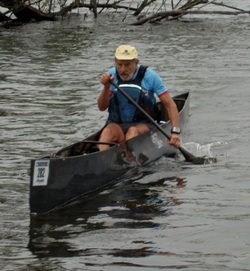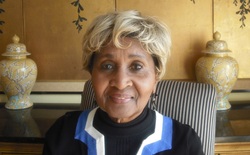
Since Dr. Kroeger asked me to comment on being active at 90, I offer some thoughts. First, one has to be alive. Secondly, in good physical and mental condition. And it’s understood that we haven’t poisoned ourselves with tobacco, alcohol, mental distress or depression, or are not depleted by a serious disease.
One has to eat right long in advance to be able (at 90) to race a canoe in the national canoe championships [As Mike has], requiring high output for 2-1/2 to 3-1/2 hours – or the General Clinton canoe race of 70 miles, taking maybe 12+ hours – depending on the current and whether paddling solo or tandem. It’s necessary to be reasonably fit, shall we say, to complete even a slow marathon (26.2 miles) at 90. And certainly we are not going to jeopardize our health by taking frowned-upon supplements! Besides, there’s no money in these still-honest sports!
Eat right. I started a plant-based diet 21 years ago because I was under a death sentence from cancer. By changing my diet I beat the cancer and, since then, I’ve had no fears of a recurrence or of contracting any disease whatsoever. Maybe it’s a fool’s paradise but for me it’s a wonderful, superb life, carefree as a child. I run the occasional marathon or half or 15K or 10K and do five or six canoe races a season and practice for them all year long in scenic places, with friends.
The plant-based diet is responsible. I began finding my gurus in 1991. You can locate them on the web: Cornell professor T. Colin Campbell, co-author of The China Study and Forks Over Knives (DVD), Dr. John McDougall (DVDs and various books), Dr. Neal Barnard, president, Physicians’ Committee for Responsible Medicine and author of several books on food addiction and diabetes, Dr. Caldwell Esselstyn, author of Prevent and Reverse Heart Disease, Rip Esselstyn, author of The Engine 2 Diet, and Mike Anderson, author of The RAVE Diet, a book explaining diet recommendations and Eating (DVD). Many of these publications include recipes.
Other experts such as Joel Fuhrman, Jeff Novick, and Dean Ornish agree, absolutely, on the importance of the plant-based, aka vegan, diet. Uniquely, they cooperate with each other on their books, programs, DVDs and advocacy.
Does this diet make me faster at running or canoe racing? Does it give me the endurance I need? I say yes. So does Scott Jurek, our greatest ultramarathon runner and author of Eat and Run, a book explaining how he could win 100+ mile races while not eating meat or dairy. Could a Paleo diet be better? Could a high-protein meat, milk and egg diet be better? If these diets didn’t kill me, maybe I could last a year on them. But when I ate those foods, in my not so humble opinion, they bestowed upon me the great gifts of cancer, arthritis, asthma, colds, coughs, stomach trouble, flu and headaches. Since I switched to a plant-based diet, I’ve not had one day of any of these diseases in over 20 years.
People are animals and animals have a daily exercise quotient. They evolved to swim, to hunt, to escape from predators, to find food, to find mates, and even to fly across oceans (birds and butterflies). How much do I exercise each week? My exercise quotient is racing a canoe three miles three times a week in good weather – Monday, Wednesday and Friday (if the weather is inclement, I’ll work out on a machine). On the other days, I’ll run a total of 30 miles. I’ll vary the running before major races, something runners call “training”. It’s really just play.
Isn’t it wonderful that we can play every day, hard, like children! At 90, what excitement! No worries about our heart, a fall, broken bones or distressed joints. Sure, things happen – injuries like hamstring or piriformis pain, plantar fasciitis, Achilles tendonitis – temporary – just part of the price of exercising. They disappear with the magic elixir of rest.
So, let me name a few vegan athletes – Carl Lewis, Billie Jean King, Venus Williams, Scott Jurek, Martina Navratilova, Edwin Moses, Tony Gonzalez….and a recent convert, Bill Clinton (you name the sport). So, if you want to be born again physically, consider changing to a plant-based diet. It works! My life has dramatically changed because of it. Yours can, too.




 RSS Feed
RSS Feed